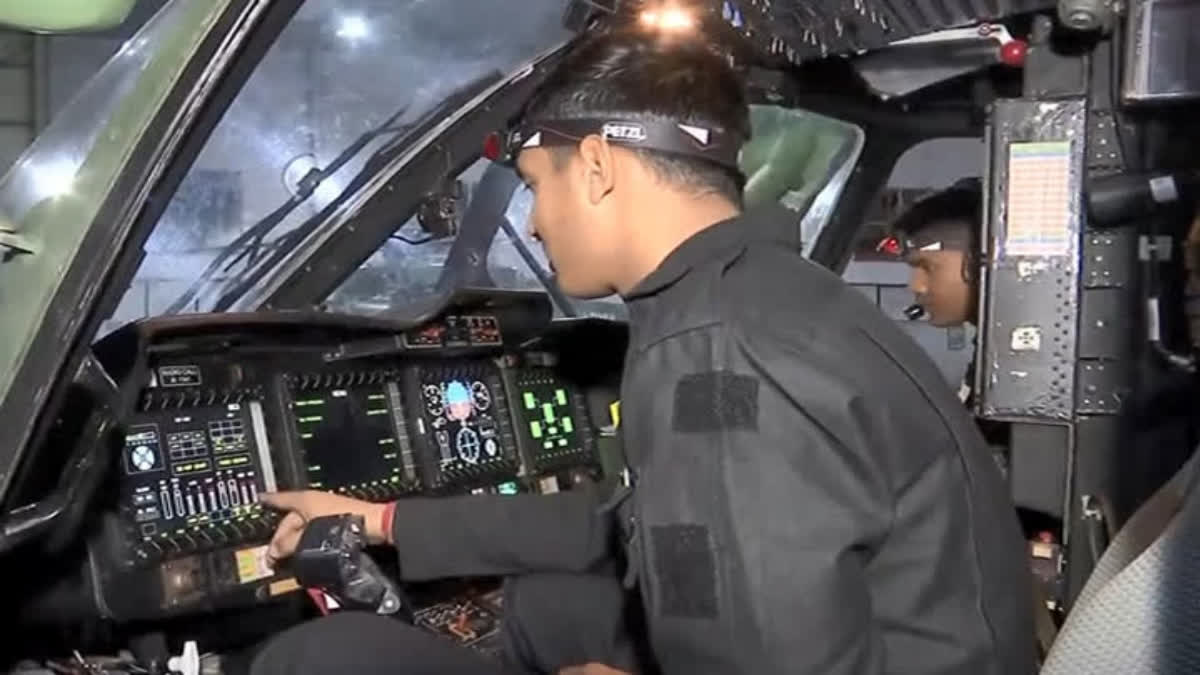Leh (Ladakh): Indian Army troops in Ladakh have demonstrated their ability to carry out night operations in high-altitude areas using Indigenous Advanced Light Helicopters (ALH) Dhruv. These helicopters, manufactured by Hindustan Aeronautics Limited (HAL), are crucial for the Army's operations in the challenging terrain and extreme weather conditions of Ladakh.
Speaking to ANI, Army personnel Havinder Singh, responsible for maintaining the fleet, explained the process of ensuring the helicopters are ready for missions."My job is to ensure that all the technicians and supervisors under me keep getting continuous training on this helicopter. Apart from this, many agencies are involved in making this helicopter serviceable, a logistics agency, Hindustan Aeronautics Limited is involved.
Talking to all of them, and calling their teams here is my job. The most important job here is the flight safety of every technician and every officer. There is no compromise in flight safety."
Singh detailed the challenges of preparing helicopters for night operations, particularly during winters when temperatures drop significantly. "After 2 months, the temperature will drop to minus 20 to minus 30. There is not much problem in today's weather, but in cold weather, when a technician goes to the aircraft, he works on the inspection for 10 minutes and then comes down to warm up before inspecting again."
Major Ayush Devliyal, a technical supervisor, also highlighted the importance of thorough inspections before a helicopter is cleared for flight. "This aircraft has to be prepared; everything is checked very closely. Every team checks their specific systems, and after that, the aircraft is certified by an engineering officer for flying. Once all these checks are successful, it is accepted by a pilot, and then it is taken for operations."
Pilots also face unique challenges while flying in such difficult conditions, particularly at night. Major Amarendra, a pilot of a Cheetah helicopter, explained the difficulties of night flying in Ladakh. "Night flying is a little more challenging than day flying. At night, your depth perception reduces, so we rely more on our instruments. The winds blow a little strong at night, so we have to take care of those things, especially the turbulent winds."
The Indian Army's operations in Ladakh require significant coordination between the technical teams and pilots, especially during night missions, where both visibility and weather pose serious challenges.



